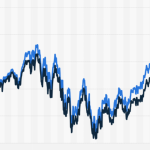For individuals eager to venture into the dynamic world of CFD trading, mastering the intricacies of this financial market is paramount. Amidst the potential for substantial gains lies an equal risk of losses if approached without a strategic framework. Delve into the strategies essential for successfully navigating the Forex CFD terrain.
Understanding Forex CFD Trading
Forex CFD trading includes speculating on the price movements of currency pairs. Unlike traditional currency trading, Contract for Difference (CFD) lets traders speculate on price movements without owning the underlying asset. It offers flexibility and potential for significant returns but demands astute risk management and strategic execution.
1. Comprehensive Market Analysis
Before engaging in the trading process, conducting a thorough market analysis is indispensable. Utilize the fundamental and technical analysis to assess market trends, economic indicators, and geopolitical events influencing currency movements. Fundamental analysis examines economic data, central bank policies, and geopolitical developments, while technical analysis involves studying the price charts and patterns to identify the potential trading opportunities.
2. Develop a Robust Trading Plan
A meticulously crafted trading plan is a roadmap for navigating the Forex CFD market. Define your trading objectives, risk tolerance, and preferred trading style. Establish entry and exit criteria based on the analysis, incorporating compliance management strategies such as stop-loss orders to mitigate potential losses. Adhering to your trading plan with discipline is key to long-term success.
3. Compliance Management Strategies
Effective risk management is fundamental to surviving and thriving in Forex CFD trading. Limit your exposure by adhering to prudent leverage ratios and avoiding overleveraging positions. Implement stop-loss orders to cap potential losses and employ proper position sizing to protect your capital. Diversifying your portfolio across multiple currency pairs helps spread risk and minimise exposure to volatility.
4. Utilise Technical Indicators
Technical indicators are vital in identifying potential trading opportunities and timing entry and exit points. Commonly used indicators include moving averages, relative strength index (RSI), and stochastic oscillators. However, avoid over-reliance on indicators and prioritise simplicity and clarity in your analysis.
5. Stay Informed and Adapt
The Forex CFD market is dynamic and influenced by many factors, including economic data releases, geopolitical events, and central bank announcements. Stay informed about the market developments and be prepared to adapt your trading strategy accordingly. Flexibility and ability to swiftly respond to changing market conditions are essential traits of successful traders.
6. Practice Patience and Discipline
Patience and discipline are virtues that separate successful traders from the rest. Avoid impulsive trading decisions driven by emotions such as greed or fear. Stick to your trading plan, exercise patience during market volatility, and resist the temptation to deviate from your established strategy.
7. Continuous Learning and Improvement
The Forex CFD market offers opportunities for those committed to ongoing learning and improvement. Stay abreast of industry trends, explore new trading strategies, and seek educational resources such as books, courses, and seminars. Additionally, analyse your trading performance regularly to identify strengths, weaknesses, and areas for improvement.
8. Embrace Volatility as Opportunity
Volatility is inherent in the Forex CFD market and can present risks and opportunities for traders. Instead of fearing volatility, embrace it as a potential source of profit. During heightened volatility, trading opportunities abound, offering the chance to capitalise on price fluctuations and generate substantial returns. Exercise caution and implement appropriate compliance management measures to navigate volatile market conditions safely.
9. Monitor Market Sentiment
Market sentiment, or the collective mood of traders, plays an important role in driving price movements in the Forex CFD market. Stay attuned to market sentiment indicators, such as investor surveys, social media sentiment analysis, and news sentiment tools, to gauge the prevailing market sentiment accurately. Understanding the market sentiment can provide valuable insights into potential market trends and help inform your trading decisions.
10. Develop Emotional Resilience
Emotions cloud judgement and lead to irrational trading decisions, resulting in losses. Developing emotional resilience is crucial for maintaining composure and making sound decisions amidst the highs and lows of CFD Forex trading. Practice mindfulness techniques, like visualisation and deep breathing exercises, to stay calm and focused during market uncertainty. Additionally, cultivate a healthy detachment from trading outcomes and focus on the process rather than the outcome to reduce emotional volatility.
Mastering in Forex CFD requires skill, discipline, and perseverance. By implementing a comprehensive trading plan, prioritising risk management, and staying informed about market developments, traders can confidently navigate the Forex CFD market’s complexities and increase their chances of success. Remember, success in CFD trading is not achieved overnight but through continuous learning, adaptation, and disciplined execution of proven strategies.
Lynn Martelli is an editor at Readability. She received her MFA in Creative Writing from Antioch University and has worked as an editor for over 10 years. Lynn has edited a wide variety of books, including fiction, non-fiction, memoirs, and more. In her free time, Lynn enjoys reading, writing, and spending time with her family and friends.















